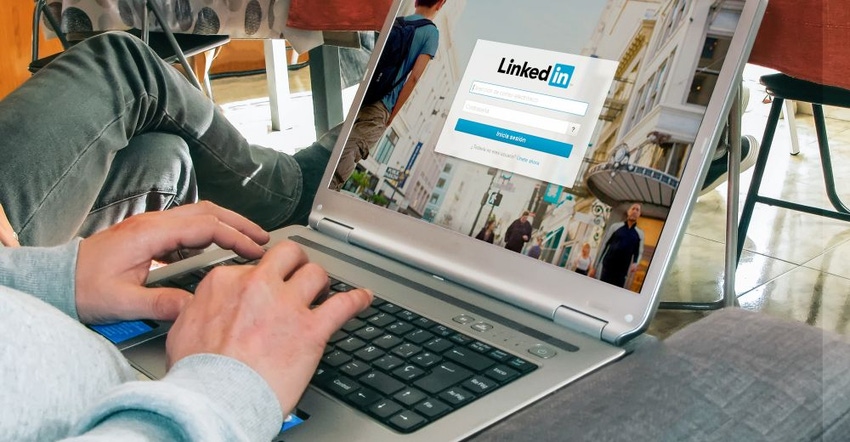If you’re looking for a job in self-storage or just want to improve your industry connections, LinkedIn offers lots of advantages. Consider these seven steps to crafting a quality profile that’ll get you noticed on this social platform.
January 26, 2021

If you’re looking for ways to promote yourself professionally, a LinkedIn profile is one of the most important tools available to you. I’ve reaped great things from my own. It’s helped me connect with amazing people in the self-storage industry, secure speaking engagements and expand my network globally. I’ve even used it to communicate with “New York Times” bestselling authors!
If you’re new to LinkedIn, here are seven steps to building a strong profile. It takes some work, but it’ll expand your options, whether you’re looking to grow within the self-storage field or beyond.
1. Do Your Research
Go to LinkedIn and spend some time reading people’s profiles. See how others have crafted their pages. How have they explained the details of their professional background? What do you like about one profile vs. another? Take notes so that when you’re ready to build your own page, you know the direction to go. This is your brand, and you want to impress!
2. Add a Great Photo
According to LinkedIn, including a photo with your profile will increase its chances of being viewed by 40 percent. But don’t take a selfie in your car and post it. This isn’t Instagram! The right image is paramount. Recruiters and hiring managers want to feel a personal connection with you as a candidate. When you have a bad photo or none at all, you’re severely reducing your chances of good connections and a possible future career.
So, use a high-quality, professional photo that also conveys your personality. Make sure you’re appropriately attired. Choose a cropped headshot that’s free of background distractions and other people. No candid shots from weddings, parties or karaoke night!
3. Complete All Sections
LinkedIn allows you to tell everyone who you are. Make sure you fill out every section as completely as possible. This is you; this is your brand. It shouldn’t only display want you want to project about yourself but what employers and coworkers have come to know about you during your career.
In your summary, avoid fluff and clichés in favor of action-packed information and language, letting your personality shine through for that prospective employer. Don’t just tell someone you’re results-driven; demonstrate this fact by citing results in your profile. Establish your education credentials and any other achievements. Share your certifications and interests. The more comprehensive your profile, the better it’ll be positioned in search results when employers in your network look for people like you.
4. Get Recommendations and Endorsements
Next, you need to build some LinkedIn “street cred.” Reach out to your connections and ask them to provide a recommendation. A good start would be a colleague, supervisor or mentor. Having a few quality endorsements looks great on a profile.
5. Be a Language Nerd
Seriously? Yes! If your LinkedIn profile is filled with spelling and grammatical errors, people are going to pass you right by. Who would blame them? I mean u”d probly thnik, it was nt verrrry prufesionul, rite? That’s why doing a thorough spellcheck—a human one because computers don’t catch every mistake—and double-checking your grammar is vital.
6. Connect With Others
Think of LinkedIn as a high school dance. You don’t want to be the person standing in the corner waiting for people to approach you. You want to be social and start good conversations!
I’ve identified four types of users on the platform:
People who want to sell you something
People who just want to collect followers
People who want something from you
People who are there for meaningful discussion and quality connections
Luckily, most users fall into that last category. It’s the thing that sets LinkedIn apart from many of the other social media platforms available today. Just make sure your profile is optimized so potential connections can find you. Also, send your own connection requests. Uniting with people you already know is a great way to start. Chances are that most folks in your personal and professional circles are already using LinkedIn.
7. Post and Comment
LinkedIn offers a wide variety of ways to post and create content. You can publish images, blogs, videos or even articles. It’s a great way to attract connections and build engagement. Just remember: LinkedIn isn’t Facebook. It’s best to avoid personal, political or controversial posts here.
The benefits of LinkedIn are vast with almost no downside. Best of all, it’s totally free! Get involved in forums, join groups and meet like-minded individuals. Job-seeking is a tough business, in self-storage or any other industry, and you need to do anything you can do to get ahead.
Rick Beal is co-founder of The Atomic Storage Group, a third-party management and consulting firm for the self-storage industry. To contact him, email [email protected]. To stay up-to-date with his publications and speaking engagements, go to www.linkedin.com/in/storagerick.
About the Author(s)
You May Also Like





